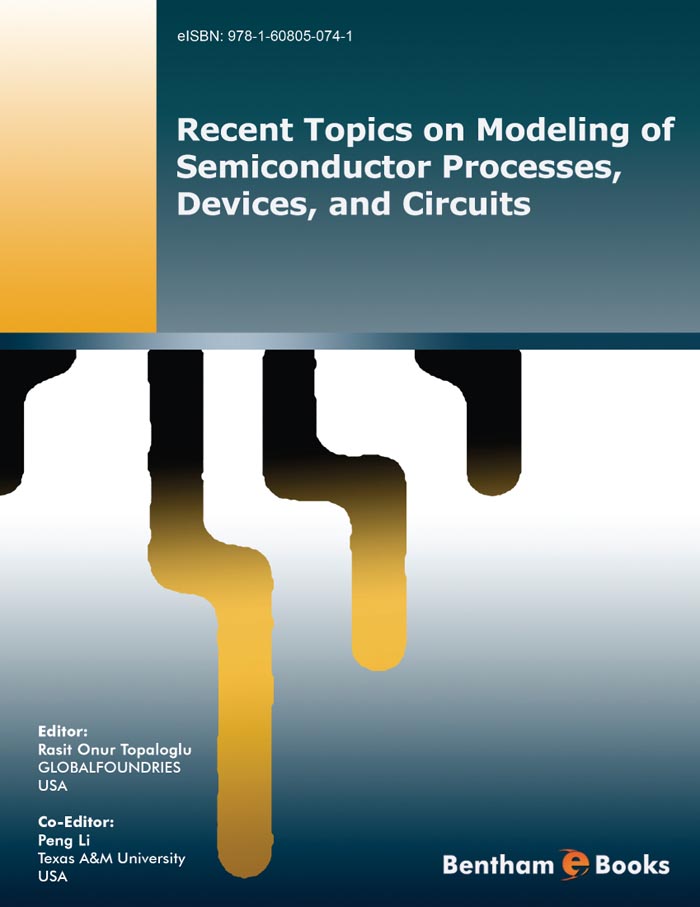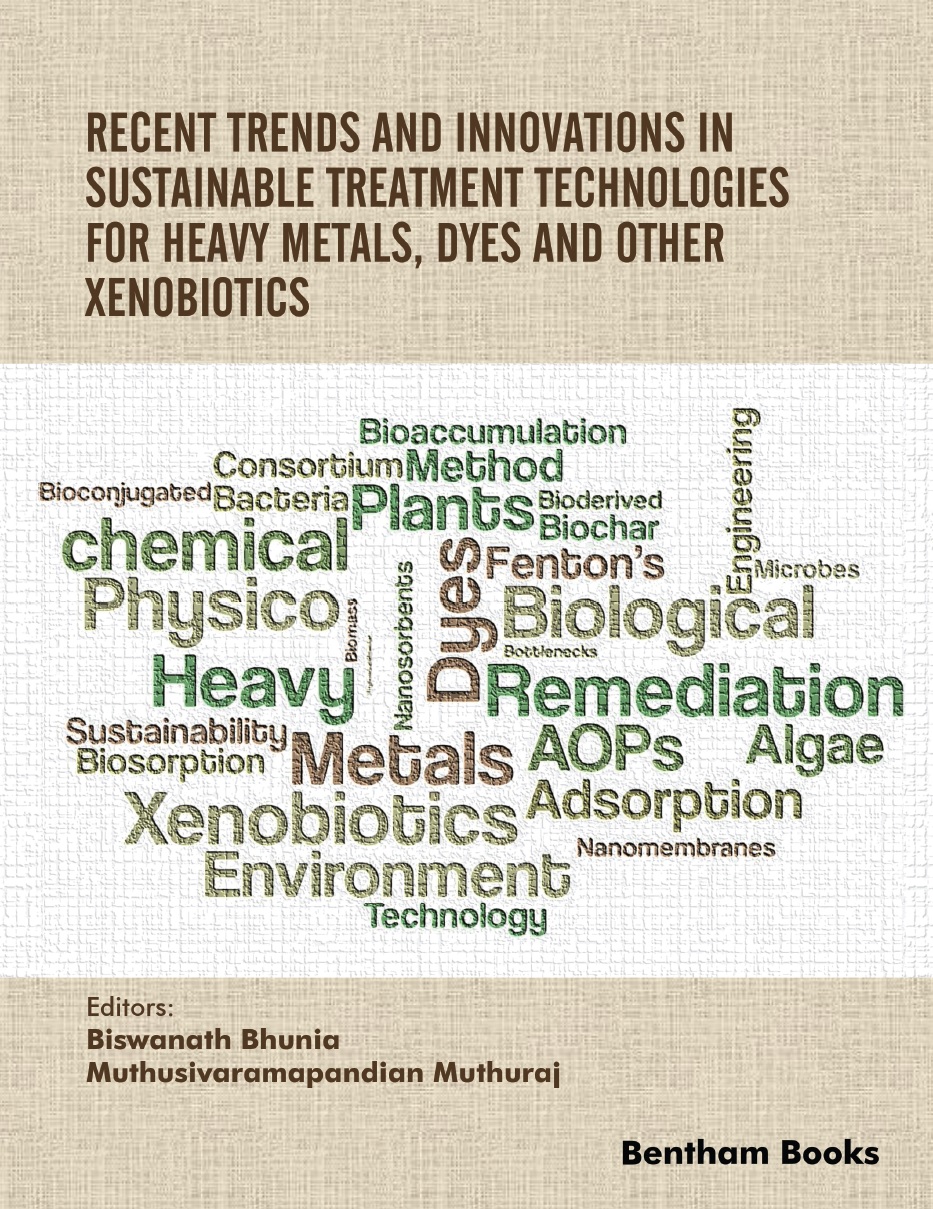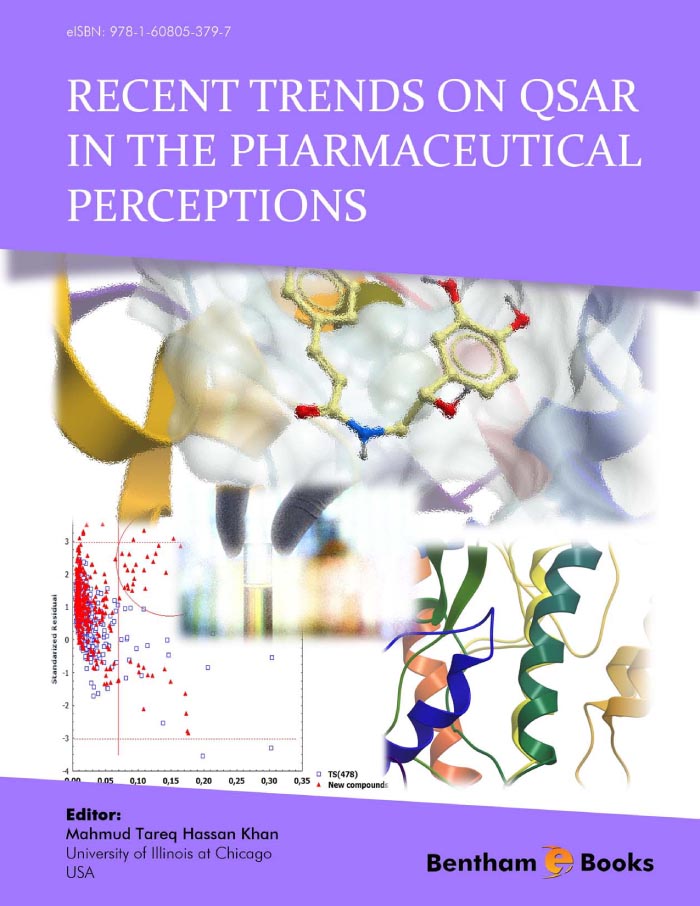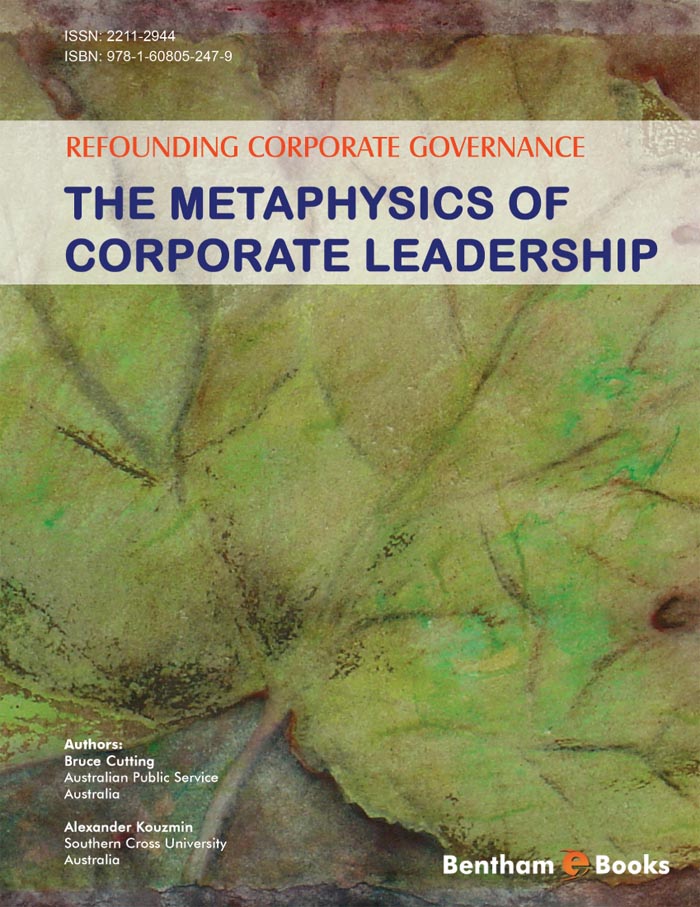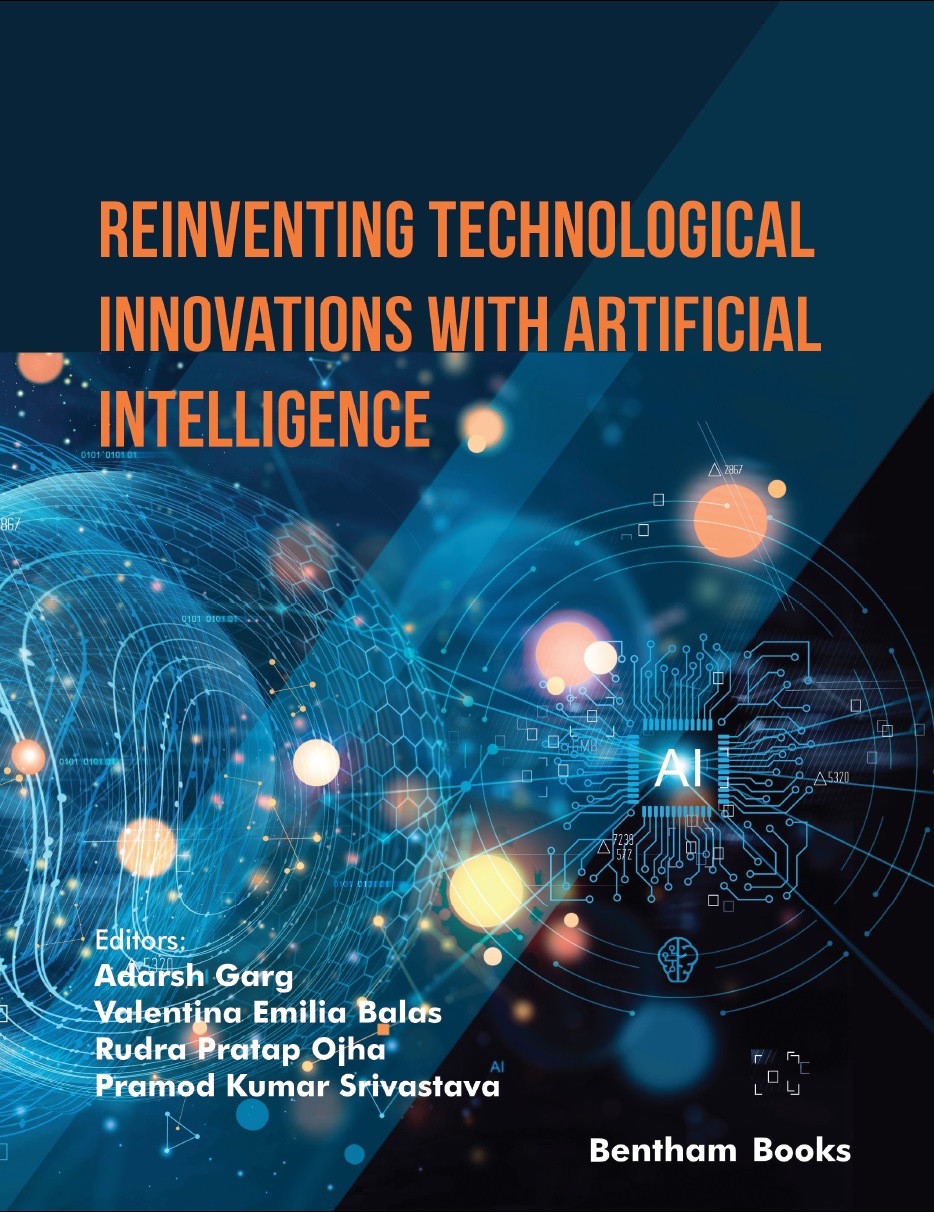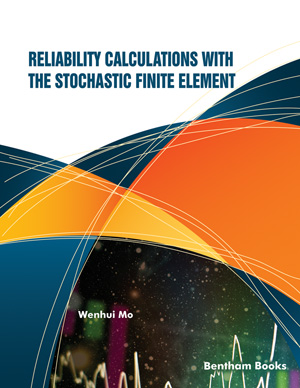Bentham Science Publishers
Bentham Science Publishers is a major publisher of more than 100 peer-reviewed science, technology and medical (STM) journals, along with a rapidly growing collection of eBooks. Since 1993, Bentham Science Publishers has been catering to the information needs of the pharmaceutical, engineering, biomedical and medical research community.1481 - 1500 of 1803 results
-
-
Recent Progress in Pharmaceutical Nanobiotechnology: A Medical Perspective
Recent Advances in Biotechnology: Volume 8
More LessRecent Progress in Pharmaceutical Nanobiotechnology: A Medical Perspective offers a comprehensive exploration of the dynamic field of pharmaceutical nanobiotechnology, focusing on its medical applications. This edited reference serves as a valuable resource for researchers, students, and professionals in various disciplines (pharmacology, biotechnology, clinical medicine and nanotechnology) , providing insights into the latest advancements and practical implications of nanotechnology in the pharmaceutical sector.
The book presents 14 edited and referenced chapters that cover several themes for readers.
General Pharmaceutical Nanobiotechnology:
Introduction to the interdisciplinary field
Exploration of nanoscale materials for medical purposes
Nanoparticle Development and Applications:
Bioinspired Nanomedicines
Lipid-Based Nanocarriers
Metallic Nanoparticles and Their Applications
Nanoparticle Targeting Strategies
Nanomedicine-Based Therapies for Cancer Stem Cells
Biotechnological Aspects:
Biotechnological Significance of Exosomes
Glycoconjugates: Biosynthesis and Functions
Innovative Nanotherapies:
Novel Nanotechnological Approaches for Glioblastoma
Biocompatibility of Nanomedicines and Bio Corona
Diagnostic and Sensing Applications:
Role of Nanoparticular/Nano Vesicular Systems as Biosensors
In Vitro Applications of Drug-Carrying Nanoparticles in Cell Culture Studies
In Vivo Imaging Techniques: Bioluminescence and Fluorescence Imaging
Precision Medicine:
The Role of Nano and Biopharmaceutics in Precision Medicine
-
-
-
Recent Technologies in Capture of CO2
More Less"Recent Technologies in the capture of CO2" provides a comprehensive summary on the latest technologies available to minimize the emission of CO2 from large point sources like fossil-fuel power plants or industrial facilities. This ebook also covers various techniques that could be developed to reduce the amount of CO2 released into the atmosphere.
The contents of this book include chapters on oxy-fuel combustion in fluidized beds, gas separation membrane used in post-combustion capture, minimizing energy consumption in CO2 capture processes through process integration, characterization and application of structured packing for CO2 capture, calcium looping technology for CO2 capture and many more.
Recent Technologies in capture of CO2 is a valuable resource for graduate students, process engineers and administrative staff looking for real-case analysis of pilot plants. This eBook brings together the research results and professional experiences of the most renowned work groups in the CO2 capture field.
-
-
-
Recent Topics on Modeling of Semiconductor Processes, Devices, and Circuits
More LessThe last couple of years have been very busy for the semiconductor industry and researchers. The rapid speed of production channel length reduction has brought lithographic challenges to semiconductor modeling. These include stress optimization, transistor reliability and efficient circuit design with respect to interconnects, power and leakage at the chip level. This e-book focuses on the latest semiconductor techniques devised to address these issues. It should be a useful resource for electronic engineers and semiconductor chip designers.
-
-
-
Recent Trends and Innovations in Sustainable Treatment Technologies for Heavy Metals, Dyes and Other Xenobiotics
More LessThis book integrates knowledge about innovative technologies developed in the past decade with information about commercial-scale processes. It is written with the objective to help readers to understand the potential of achieving sustainability and high efficiency in wastewater treatment. The book presents nine chapters. Chapter 1 details the types of wastewater, its characteristics, and the major commercial-scale strategies employed to treat wastewater. Chapter 2 details the different types of physicochemical methods utilized for the remediation of heavy metals, dyes, and xenobiotics. Chapters 3 and 4 highlight innovations in the advanced oxidation process and adsorption for remediation of such complex molecules, respectively. Chapters 5, 6, and 7 highlight the recent innovations in bioremediation of xenobiotics, heavy metals, and dyes, respectively. Finally, chapters 8 and 9 discuss the latest technologies, prevailing bottlenecks, and the path ahead towards commercial viability and environmental sustainability in both physico-chemical and biological treatment processes.
-
-
-
Recent Trends and The Future of Antimicrobial Agents - Part I
More LessRecent Trends and the Future of Antimicrobial Agents provides a significantly expanded overview of the topic with updated research in a broader context on the development of alternative approaches against microbial infections. This part consists of ten chapters. The first five chapters describe naturally derived antimicrobial compounds such as plant-based antimicrobials (PBAs), enzymes-based and antibody-based antibacterial therapeutic and secondary metabolites from plant endophytes. The book proceeds to provide details about antimicrobials derived from marine microorganisms (bacteria, fungi, actinomycetes, and cyanobacteria) is included to inform readers about effective medications against MDR strains. Specific chapters describe the drug development against protozoans, with one chapter focusing on Plasmodium. Chapter contributors have postulated novel approaches for antimalarial therapeutics. The book also includes an explanation of host target identification and drug discovery with the purpose of informing the reader about the implications in viral biology and how they could be exploited for treating viral diseases. The contents cater to the information needs of professionals and learners in academia, industry and health services who aim to learn the most significant experimental and practical approaches towards finding alternatives to existing antimicrobial therapies.
-
-
-
Recent Trends and The Future of Antimicrobial Agents - Part II
More LessRecent Trends and the Future of Antimicrobial Agents provides a significantly expanded overview of the topic with updated research in a broader context on the development of alternative approaches against microbial infections.
This part primarily describes the use of probiotics, chemically synthesized compounds and nanomaterials as antimicrobial agents. The first chapter describes the potential of probiotics for the restoration of gut microbiomes. Amongst various antimicrobial agents, the use of antibodies has recently been investigated as a potential remedy. A chapter on antibody-based therapy as an alternative to antibiotics has been included. Chemical synthesis has eased the development of target-based prospective drug molecules against microorganisms. Chemically synthesized cationic amphiphiles and amphiphilic nanocarriers as antimicrobial agents have been discussed with sufficient detail in two different chapters. Research and progress in Schiff Base-Metal Complexes and Metal-Organic Frameworks for their antimicrobial applications have also been described in two separate chapters. Independent chapters discussing the design, synthesis and antimicrobial applications of biogenic metal or metalloid nanoparticles, bactericidal QDs and MoS2-based antibacterial nanocomposites have fulfilled the aim of incorporating cutting-edge research in the areas of alternative antimicrobials. Also, a new-age approach to combat microbes, antimicrobial photodynamic therapy (aPDT), is discussed in the final chapter of the edited volume. This part intends to provide the readers with an updated and broad view of research and development in alternative remedial approaches against microbial infections.
The contents cater to the information needs of professionals and learners in academia, industry and health services who aim to learn the most significant experimental and practical approaches towards finding alternatives to existing antimicrobial therapies.
-
-
-
Recent Trends on QSAR in the Pharmaceutical Perceptions
More LessQuantitative Structure-Activity Relationship (QSAR) is a field where true multidisciplinary approaches are being used. This volume titled Recent Trends on QSAR in the Pharmaceutical Perceptions offers an overview on the latest advancements in the field. The e-book explains both basic approaches and new approaches and ideas in QSAR research, providing readers with an impression of recent inclinations and advances in different aspects of the QSAR strategies, such as descriptors, methods of modeling and validation.
This e-book is a valuable reference for pharmacologists, medicinal chemists, drug designers, biotechnologists and industry (pharmaceutical and chemical) professionals. It should serve as an important reference material to stimulate interactions and bridge the gap between participants in academia and industries.
-
-
-
Redefining University Leadership for the 21st Century
More LessIn a constantly changing economic environment, higher education institutions need to adapt in order to be relevant to their stakeholders and the society. The unpredictable landscape also demands a fresh approach as university presidents are increasingly subject to high resolution and three-dimensional scrutiny. Instead of relying on last centurys old management mindset, university leaders must build institutions that are agile and flexible, which can continuously learn to adapt to the changing environment. Redefining University Leadership for the 21st Century is a treatise on the challenges universities face in current times. Readers will understand, in three parts, the heart of what makes a great university.
The initial part of the book covers the market failures and the management practices that have led to the erosion of confidence in universities among stakeholders. The authors examine the consequences of market failures caused by the marketization of higher education: an oversupply of graduates, student dissatisfaction, mismatch between qualifications and needed skills, student disillusionment, and the diminishing return on investments by students and their families.
Next, authors offer concrete advice on how universities can future-proof university graduates in this fast-changing world of the fourth industrial revolution and artificial intelligence. The authors also provide valuable strategies to help university leaders to lead effectively in this uncertain world with a concluding case study on the University of Hong Kong.
With its clear, logical and concise presentation, Redefining University Leadership for the 21st Century is a must-read for anyone who leads, works or studies in a university, or is interested in current trends in the higher education sector.
-
-
-
Refounding Corporate Governance: The Metaphysics of Corporate Leadership
More LessRefounding Corporate Governance: The Metaphysics of Corporate Leadership is a deconstructive tour-de-force and leads the reader to an understanding of the further evolution of corporate governance in considered ways and brings them together in a coherent and understandable way. This book looks at the role of the individual in the organization and allows readers to reflect on their own role and interaction within their organization. It focuses particularly on leaders, managers and corporate board members and on how power and leadership in the corporation are operating now. The volume also looks comparatively at the governance dynamics of other organizations, such as the Catholic Church and Universities.
The book provides an in-depth look at the way society's organizations operate in the most important spheres of society and, in so doing, presents a comprehensive understanding of governance. The book should prove to be very useful for scholars and professionals interested in management theory and organizational leadership studies.
-
-
-
Refounding Political Governance: The Metaphysics of Public Administration
More LessRefounding Political Governance: The Metaphysics of Public Administration points to a possible paradigm shift in the way Anglo-American Public Administration should be understood and analyzed. The book presents a unique approach to the analysis of power, leadership and management in Public Administration. The central theme is that humans make organizations in their own image and these organizations, in turn, are a product of the way humans think and act. The book extrapolates from historical philosophy and personality typologies to explain the dynamics and evolution of Public Administration. With the philosophical framework and approach clearly explained, the book provides a critique of current practice and recommends what is required to re-invent Public Administration, rather than New Public Management, in Anglo-American contexts.
The book explains a new, more complex, and more useful, understanding of the dynamics of contemporary US Public Administration situated within the American Constitution. This book is ground-breaking and should be useful in all graduate Public Administration courses and professionals in the field of Public Administration.
-
-
-
Regeneration of Abandoned Spaces: A New Design Approach
More LessOur urban landscapes are filled with "leftovers" - abandoned buildings and unused spaces, remnants of industrial decline and societal transformations. Regeneration of Abandoned Spaces: A New Design Approach investigates how design and architecture can revitalize these neglected areas, transforming them into dynamic, livable environments.
This book is organized into three parts, each providing a comprehensive framework for addressing this multifaceted challenge. Part One explores the dynamic nature of modern living spaces and how interior design can adapt to the fluid lifestyles of contemporary nomads. It delves into advanced drawing techniques that capture the intricate complexities of these evolving environments.
Part Two focuses on the philosophical aspects of design, particularly within exhibition design, examining how unfinished spaces can evoke deep emotional responses. It explores the role of temporary installations in revitalizing urban areas, demonstrating how ephemeral interventions can catalyze long-term renewal.
The final section, Part Three, addresses the concept of "unfinished design" in architecture, showcasing successful projects from around the world. It emphasizes the aesthetic and functional benefits of embracing imperfections and repurposing abandoned spaces. This part provides practical strategies and inspiring examples, illustrating how adaptive reuse and incompleteness can lead to sustainable and inclusive urban regeneration.
Regeneration of Abandoned Spaces: A New Design Approach is an essential resource for professionals, urban planners, and anyone passionate about urban architecture and renewal. Combining theoretical insights with practical guidance, it equips readers with the tools and knowledge needed to reimagine and reconstruct our cities, fostering a more sustainable and inclusive future.
-
-
-
Regenerative Medicine & Peripheral Nerve Endoscopy
Neuroendoscopy and Interventional Pain Medicine: Volume 1
More LessNeuroendoscopy and Interventional Pain Medicine is a clinically focused medical monograph series. With contributions from a team of internationally recognized neurosurgeons and spinal surgery specialists, the series aims to illuminate the latest advancements in minimally invasive neurosurgical techniques and pain management. Each volume offers invaluable insights into the future of minimally invasive treatments in this medical subspecialty.
Interventional Pain Surgery is the third of the monograph series. This book comprehensively covers endoscopic techniques for spinal surgery. Topics include interlaminar lumbar endoscopy, transforaminal lumbar discectomy, endoscopic approaches for lumbar spinal canal stenosis, and management of chronic low back pain through rhizotomy and rhiziolysis. The endoscopic treatment of basivertebral neuropathy, cervical foraminotomy, and decompression techniques is explained in dedicated chapters. Finally, the book also addresses endoscopic posterior lumbar interbody fusion and procedures for adjacent segment disease after lumbar fusion.
Key Features
- Covers a wide range of topics in neuroendoscopy and interventional pain medicine
- Emphasizes evidence-based approaches to treatment
- Offers clinical perspectives from expert surgeons
- Includes scientific references for researchers and advanced learners
It is an essential resource for readers who need to enhance their understanding of the latest technological advancements in neuroendoscopy and interventional pain medicine and apply these innovative techniques to improve patient outcomes.
-
-
-
Regional Comprehensive Economic Partnership
More LessThe Regional Comprehensive Economic Partnership (RCEP) is a free-trade deal between 10 ASEAN member states and Australia, China, Japan, New Zealand, and South Korea. It is the world's biggest regional trade deal, and it will create the world's most populous trade area. This edited collection features 10 contributions from multidisciplinary authors and is meant to share research and best practises on different aspects of the RCEP. It presents research projects that contribute to the discussion about the theory, lessons learned, and business strategies, to give a better understanding of the RCEP and how it can shape policy in member countries. The themes in each chapter can also serve to evaluate reports on the RCEP's overall progress. The book covers a broad range of subjects, including an overview of the RCEP, digital economy, peer-to-peer lending, international e-commerce, big data, ICT readiness and much more. This work is a key source of information and reference for RCEP development for academics and researchers (in economics and political science), government and trade organisations and policymakers interested in the RCEP. Members of the general public who want to understand debates surrounding the RCEP will also benefit from the information provided.
-
-
-
Reinventing Technological Innovations with Artificial Intelligence
Federated learning for Internet of Vehicles: IoV Image Processing, Vision and Intelligent System: Volume 1
More LessReinventing Technological Innovations with Artificial Intelligence delves into the transformative impact of Augmented and Virtual Reality (AVR) technology across industries. The book explores the merging of real and digital worlds, paving the way for personalized experiences in areas such as tourism, marketing, education, and more. With the potential to redefine business practices and societal norms in the era of Industry 4.0, AVR technologies hold untapped potential beyond gaming and entertainment. This volume presents a comprehensive overview of the current landscape, challenges, and prospects of integrating AVR with Artificial Intelligence (AI) for innovation and sustainability in various domains. The book presents 11 edited chapters contributed by technology and innovation experts that explore applications of AI, AR and VR technologies in different sectors in both public and private sectors. The editors have included reviews of technologies that impact human resource management, corporate social responsibility, healthcare, supply chain and criminal investigation. The reviews also highlight the role of AI in sustainable agriculture and smart cities.
Key Features:
Unveils the role of AVR in transforming real surroundings into digitally enhanced personal experiences.
Explores AVR's applications beyond gaming in diverse sectors like marketing, construction, education, and more.
Discusses challenges such as technical limitations, high costs, and resistance to adopting AVR.
Addresses the need to enhance the reliability and effectiveness of AVR technologies in various industries.
Provides a comprehensive perspective on AI innovations, AR, and VR technologies with real-world examples.
The book is an informative reference for researchers, professionals, and experts in technology, innovation, who are interested in the convergence of Augmented and Virtual Reality with AI for practical applications in diverse industries.
-
-
-
Reliability Calculations with the Stochastic Finite Element
More LessReliability Calculations with the Stochastic Finite Element presents different methods of reliability analysis for systems. Chapters explain methods used to analyze a number of systems such as single component maintenance system, repairable series system, rigid rotor balance, spring mechanics, gearbox design and optimization, and nonlinear vibration. The author proposes several established and new methods to solve reliability problems which are based on fuzzy systems, sensitivity analysis, Monte Carlo simulation, HL-RF methods, differential equations, and stochastic finite element processing, to name a few.
This handbook is a useful update on reliability analysis for mechanical engineers and technical apprentices.
-
-
-
Religious Philosophies and Environmental Ethics
More LessReligious Philosophies and Environmental Ethics addresses the critical environmental crisis caused by human activity and examines how religious philosophies can contribute to solutions. The book explores the intersection of environmental ethics and religious thought, offering a fresh perspective on how spiritual beliefs might help guide humanity toward sustainable living. It examines the causes of environmental degradation, and various religious perspectives on the issue, and proposes faith-based solutions for a more harmonious relationship with nature. Through a blend of philosophical inquiry and practical application, the book aims to inspire change in how we approach environmental conservation.
Key Features:
- Explores the role of religious philosophies in solving environmental problems.
- Discusses the ethical implications of environmental degradation.
- Offers faith-based solutions for future sustainability.
- Proposes a new framework for integrating religious thought into environmental policy.
-
-
-
Renewable Energy Engineering: Solar, Wind, Biomass, Hydrogen and Geothermal Energy Systems
Recent Advances in Renewable Energy: Volume 3
More LessResearchers, politicians and lay persons around the world agree that renewable energy technologies will play an increasingly important role in strengthening national economies in the future. The renewable energy industry has the potential to significantly increase power capacity of several countries and subsequently create many jobs.
This book examines recent advances in specific renewable energy systems. Readers will learn about theoretical and applied perspectives which are key to addressing the major issues associated with such systems. Chapters cover solar energy systems, thermal energy storage, bioenergy, hydrogen production, geothermal energy and measurement techniques for these energy systems. Students in engineering programs, and engineers working in academia and the renewable energy sector will be able to broaden their understanding of complex renewable energy projects through the comprehensive overview of both the fundamental concepts and the technical issues covered in the text.
-
-
-
Reproductive Biology, Physiology and Biochemistry of Male Bats
Frontiers in Reproductive Science: Volume 1
More LessThis monograph explains the physiological, biochemical and behavioral processes of male bat reproduction. Chapters cover spermatogenesis, sperm ultrastructure, reproductive homeostasis, apoptotic processes, sperm maturation, sperm storage in female bats, and sexual selection processes.
The volume also presents studies focused on the reproductive physiology of Mexican cave bat species.
This monograph is a suitable reference for undergraduate and postgraduate students as well as researchers interested in chiropteran reproductive biology.
-
-
-
Research Methodology and Project Management in Biotechnology
More LessResearch Methodology and Project Management in Biotechnology is a vital resource addressing core concepts in the dynamic field of biotechnology. This comprehensive textbook focuses on research methodology, techniques, and project management, and provides essential knowledge for students and faculty in life sciences and allied disciplines.
Key features of the book include learning objectives, self-assessments and exercises, and a simple presentation (using bullet points, tables, and figures) designed to assist comprehension and retention of key information.
The book is split into 5 units with 12 focused chapters:
Unit I: Molecular Biology Techniques
Covers various techniques used in molecular biology, including nucleic acid isolation, DNA fragmentation, PCR, DNA sequencing, and more.
Unit II: Scientific Communication and Literature
Introduces the process of research writing.
Unit III: Biotechnology Entrepreneurship and Marketing
Covers the role of funding, intellectual property rights, and regulations.
Unit IV: Genomics, Proteomics, and Bioinformatics
Explores DNA sequencing strategies, gene expression analysis, and the role of bioinformatics in drug discovery.
Unit V: Advanced Biotechnological Techniques
Covers topics such as antisense technology, molecular cytogenetics, pharmacogenomics, next-generation DNA sequencing, and ethical considerations in science and technology.
Unit VI: Medical Biotechnology
Covers disease detection and diagnosis, genetic diseases, personalized medicine, nanotechnology, gene therapy, regenerative medicine, and the Human Genome Project.
This textbook is suitable for courses aimed to enhance biotechnology project planning and execution skills and building a professional career path in biotechnology.
-




